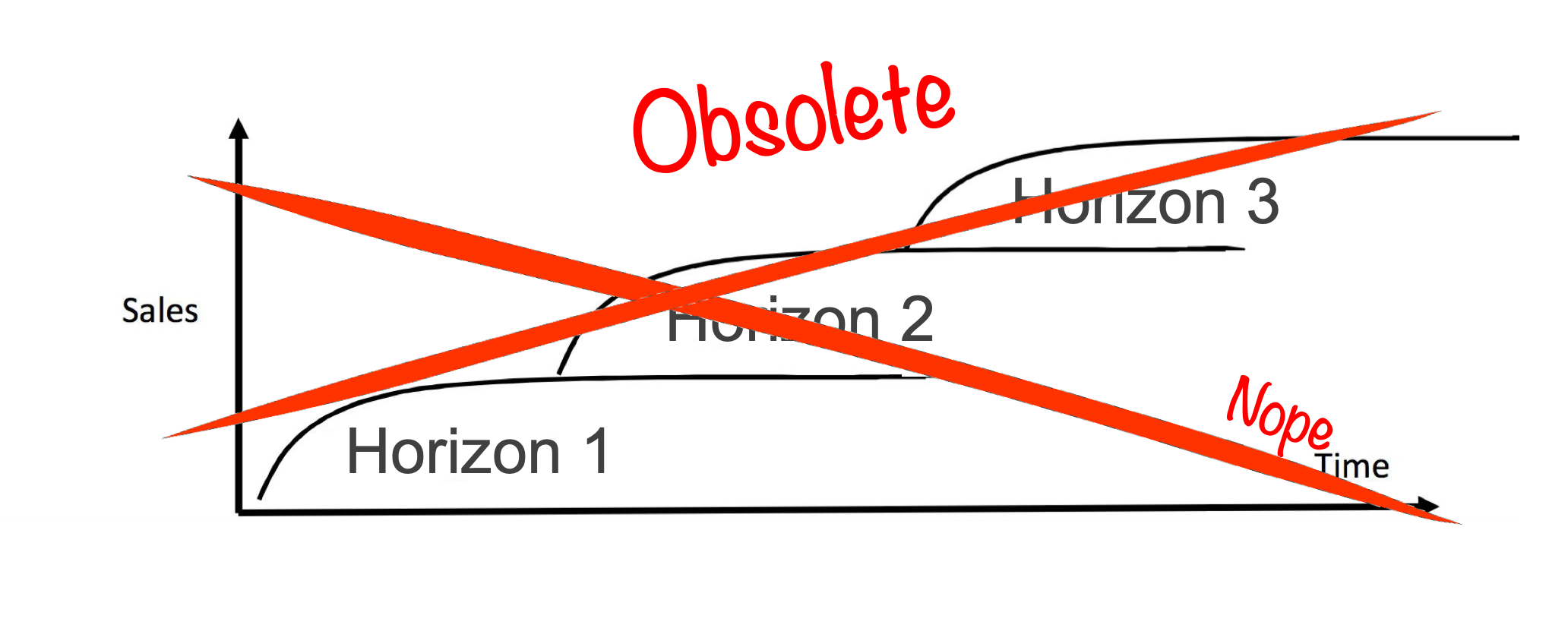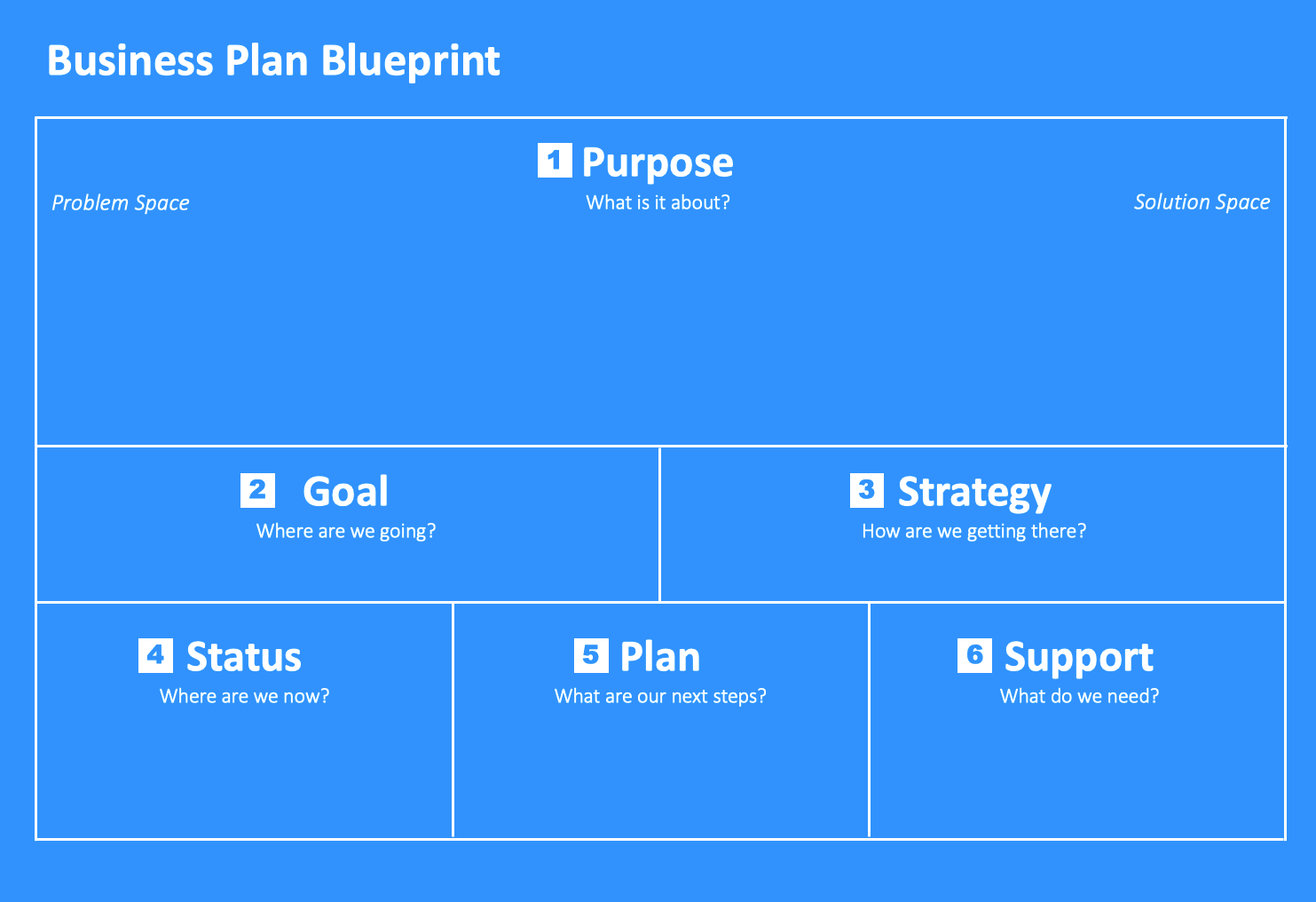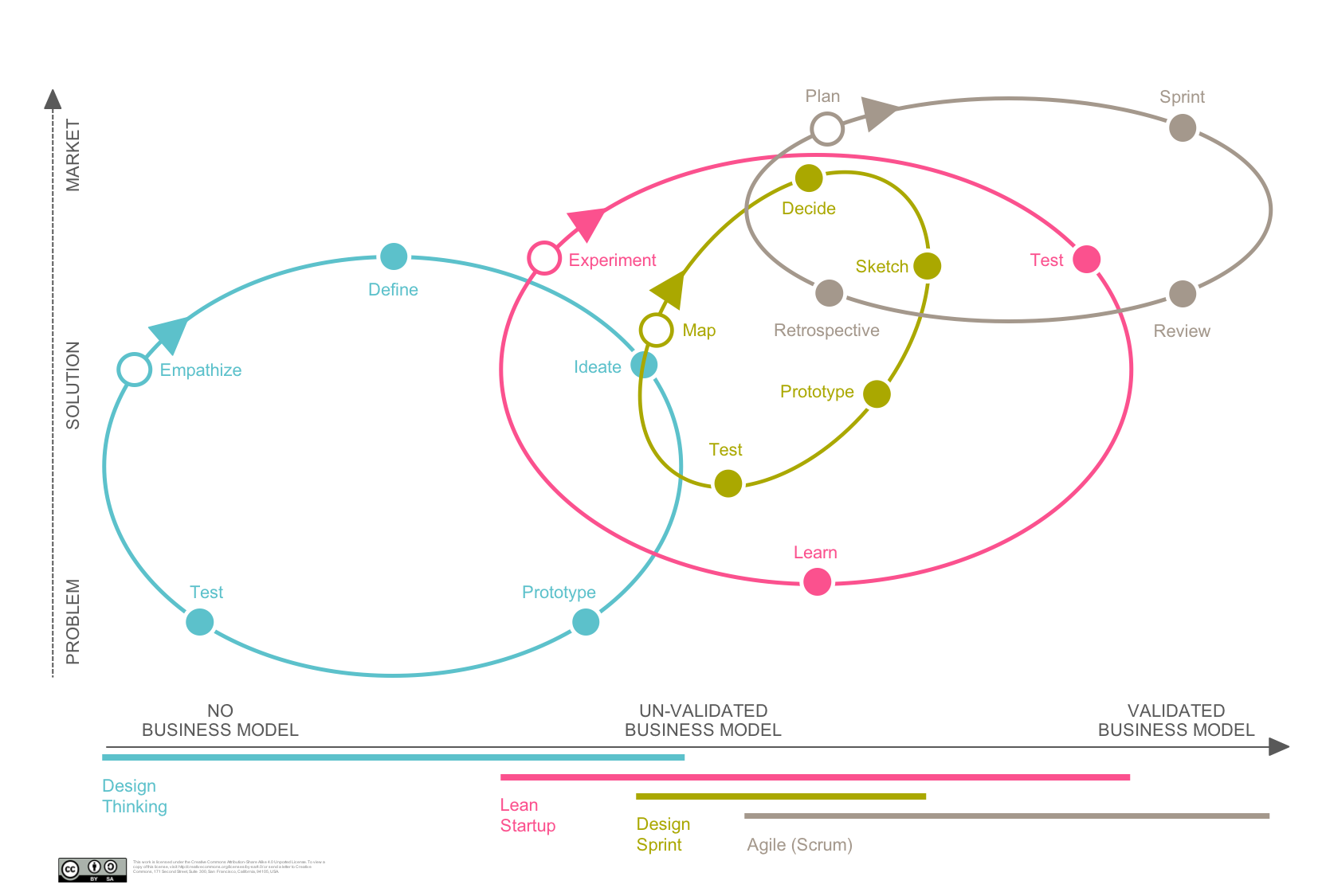September 2019 > Originally posted on Medium
McKinsey’s 3 horizons model is dead
About 10 years ago the book The Alchemy of Growth introduced the 3 horizon model, which has since often been referred to as the McKinsey 3 horizons of innovation. Credit where credit’s due, because the 3 horizon model has done a great job in highlighting that not all “innovation” is the same.
A few days ago Steve Blank wrote a nice HBR article where he highlighted that the world has changed, and the 3 time horizons are actually no longer bound by time. Especially time horizon 3 type innovations can disrupt the status quo a lot faster than the originally projected 36 to 72 months.
Whilst I absolutely agree with Steve, I also believe the 3 horizon model has additional flaws beyond the irrelevance of the time aspect of its horizons. For fans of a 3-pronged approach I have previously already shared that I prefer Clayton Christensen’s efficiency, sustaining and market-creating to describe his 3 types of innovation.
The 3-type world
It is still true that not all innovation are the same, but perhaps it’s time to reevaluate the value of categorising innovation in 3 buckets. Different types of innovation are often referred to during discussions over investments, over where funding for which types of “innovation” should come from.
The lines between which type of innovation should fall under which of the 3 horizons can be — very — blurry … and we all know that people who need funding can be very creative to position whatever they are trying to do in another “time horizon”.
A dual culture
There are plenty of others who have identified 2 rather than 3 innovation types or cultures. Personally I found that the authors of Dual Transformation did a pretty good job at describing the differences.
Both worlds are funded differently, require a different culture and team skillset.
Remain relevant and/or continue to grow
A well-oiled specialist product team must have a good handle on the things that need fixing/refactoring. At the same time, this star team that knows their product inside-out as well as what their competition is up to will need to generate plenty of promising ideas of how to make things more efficient, improve functionality/usability.
This team has clear revenue targets based on past results and to manage investments in this portfolio it is important to prioritise and find the right balance between ideas to make things more efficient (H1) and sustaining innovation initiatives (H2) to grow.
Whilst this team may also well positioned to explore expanding into new markets or address new customers …. this is where it can get fuzzy. Depending on the similarities and level of uncertainty, it could also suggest a new separate team to “explore the new”.
Explore the new
Market-creating opportunities to solve problems significantly better to entice customers change behaviour requires a different approach. The first key difference is how ideas to explore a new opportunity get support. LinkedIn founder Reid Hoffmann shared in a podcast some time ago that the most promising ideas are those that polarise investors. Reid said “What you want is some people going, ‘You guys are out of your minds,’ and some people going, ‘I see it’” based on the idea that universal approval means that the idea is so obvious that it will soon face a stampede of competitors.
Ideas that cannibalise the current products rarely come from inside the same business. Other differences are a result of the team size and number of uncertainties. The small team will need to consist of generalist who can take on multiple roles and an experimental culture to quickly seek answers to questions or come up with better questions to ask.
Summary
Having a clear Business Plan Blueprint with a Purpose, Goal, Strategy, Status, Plan and request for Support to team agreed to applies to both, but the funding and governance must be adapted to give each the maximum chance of being successful.
Not “when/how” do I fill in my “Canvas” but “why”
… and the various innovation methodologies should be used on either side.




